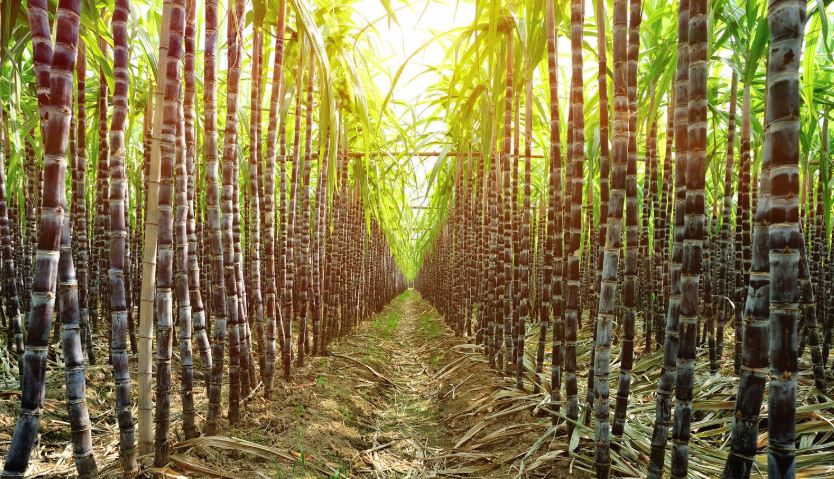India stands as one of the largest producers of sugarcane globally, with its rich agricultural heritage and favourable climatic conditions.
Sugarcane is a vital crop that not only powers the sugar industry but also contributes significantly to ethanol production and rural livelihoods.
The crop supports millions of farmers and plays a critical role in India’s economy, fostering employment and regional development.
Understanding the factors behind India’s sugarcane success sheds light on its agricultural strengths. In this article, we explore highest sugarcane producing states in india and the regions driving its impressive output.
Why is Sugarcane Important in India?
Sugarcane is not just a crop, it’s a lifeline for many farmers and industries. It contributes to multiple sectors, including:
- Sugar production: India is the second-largest sugar producer globally.
- Ethanol production: Ethanol is blended with petrol to reduce fossil fuel dependency.
- Jaggery and molasses: Staple products in rural households and industries.
- Employment generation: Sugarcane farming employs millions of rural workers, making it a cornerstone of India’s agricultural economy.
- Economic stability: It acts as a buffer crop during economic fluctuations, ensuring a steady flow of revenue for farmers.
- Renewable energy source: By-products like bagasse are used to generate electricity, contributing to energy sustainability.
What Are the Main Factors Influencing Sugarcane Production in India?
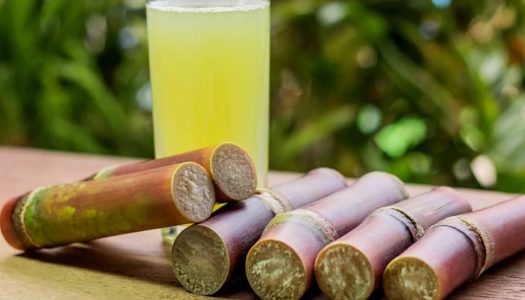
Sugarcane thrives under specific conditions:
- Climate: It requires tropical or subtropical regions with 25–30°C temperatures.
- Soil: Fertile alluvial and loamy soils are ideal for high yields.
- Irrigation: Ample water supply ensures better growth, although drought-resistant varieties are emerging.
- Technology adoption: Modern techniques like drip irrigation and mechanized farming are boosting productivity while conserving resources.
- Government initiatives: Subsidies and crop insurance schemes encourage farmers to invest in better farming practices.
- Research and development: Continuous innovation in high-yield and pest-resistant varieties improves overall production.
How Does Sugarcane Benefit Rural Farmers in India?
For rural farmers, sugarcane is a high-value cash crop that offers steady income due to its high demand. Key benefits include:
- Guaranteed Buyers: Sugar mills provide assured procurement, reducing market risks.
- Employment Generation: From cultivation to processing, sugarcane supports jobs.
- Government Support: Schemes and subsidies further secure farmer livelihoods.
- Perennial cultivation: Its perennial nature ensures year-round farming, providing economic stability.
- By-product income: Farmers earn additional revenue from by-products like bagasse and molasses.
- Intercropping opportunities: Sugarcane fields can also support intercropping with vegetables or pulses, further diversifying income.
What Are the Challenges in Sugarcane Farming in India?
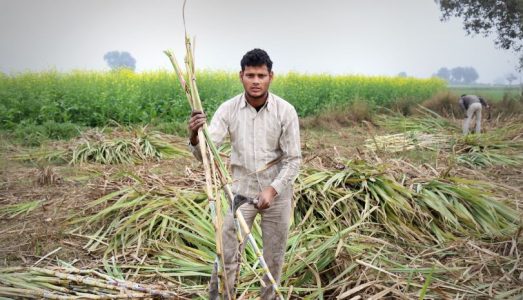
Despite its significance, sugarcane farming faces several obstacles:
- Water Scarcity: Sugarcane is water-intensive, posing challenges in arid regions.
- High Input Costs: Fertilizers and pesticides strain farmer budgets.
- Pests and Diseases: Common infestations like red rot and top shoot borers affect yields.
- Labour shortages: Manual planting and harvesting demand significant labour, which is often scarce during peak seasons.
- Delayed payments: Farmers often face delays in payments from sugar mills, causing financial strain.
- Climate variability: Unpredictable weather patterns and floods can reduce sugarcane yields significantly.
How Does the Sugarcane Industry Impact India’s Economy?
Sugarcane supports downstream industries like sugar manufacturing, ethanol production, and jaggery making. Its contributions include:
- Revenue Generation: Sugar exports boost foreign exchange.
- Energy Security: Ethanol blending reduces crude oil imports.
- Industrial Growth: Supports ancillary industries such as packaging and bio-composting.
- Rural development: Sugar mills are often located in rural areas, promoting regional economic growth.
- Infrastructure growth: The sugar industry fosters development in transportation, storage, and logistics.
- Global competitiveness: With its high-quality sugar and ethanol, India holds a significant share in the international market.
Top 10 Highest Sugarcane Producing States in India
1. Uttar Pradesh

Uttar Pradesh is often referred to as the sugarcane hub of India. The state boasts the highest sugarcane production in the country, accounting for more than 40% of the national output.
Blessed with fertile alluvial soil and a well-established irrigation network, Uttar Pradesh supports a thriving sugarcane farming ecosystem.
The state’s sugar industry traces its roots back to the colonial period when sugar mills were established to meet growing demand.
Over the decades, the region has transitioned to modern agricultural practices, including the use of hybrid seeds, precision farming, and advanced irrigation systems. These efforts have significantly boosted production efficiency and reduced wastage.
In recent years, Uttar Pradesh has also become a leader in ethanol production, driven by government initiatives to promote ethanol blending in fuel.
The state’s sugar mills are heavily involved in producing ethanol as a by-product, adding another dimension to its economic contributions. Additionally, Uttar Pradesh exports a significant portion of its sugarcane products, further strengthening its position in the global market.
Here are some quick insights into the performance metrics of Uttar Pradesh’s sugarcane industry:
- Annual sugarcane production: Over 170 million tonnes.
- Sugarcane price per quintal: ₹350–₹400.
- Total area under cultivation: Approximately 2.5 million hectares.
- Average yield per hectare: 70–80 tonnes.
- Number of operational sugar mills: Over 120.
- Ethanol production capacity: 1 billion litres per year.
- Export contribution: Significant, with a focus on raw sugar and ethanol.
The sugarcane sector in Uttar Pradesh is not only an economic powerhouse but also a key driver of rural employment and development.
With continued investments in technology and infrastructure, the state is poised to maintain its dominance in the sugarcane industry.
2. Maharashtra

Maharashtra is widely recognized for its cooperative sugar mills and sustainable farming techniques. With its emphasis on water-efficient methods, the state stands as the second-largest producer of sugarcane in India, contributing approximately 20% to the national output.
Sugarcane farming in Maharashtra is concentrated in regions like Pune, Kolhapur, and Ahmednagar, where farmers leverage drip irrigation and crop rotation to maximize yields.
The cooperative model has been particularly successful here, with farmers owning stakes in sugar mills and actively participating in decision-making. This has fostered a sense of ownership and boosted productivity.
Despite challenges like periodic droughts, Maharashtra’s sugarcane farmers have adapted well, aided by government subsidies and research into drought-resistant varieties.
The state is also a pioneer in ethanol production, with sugar mills contributing to the national ethanol blending program.
The following points offer a deeper look at Maharashtra’s sugarcane industry metrics:
- Annual sugarcane production: Around 80 million tonnes.
- Sugarcane price per quintal: ₹300–₹350.
- Total area under cultivation: 900,000 hectares.
- Average yield per hectare: 65–75 tonnes.
- Number of sugar mills: Over 190, mostly cooperatives.
- Ethanol production: Major contributor, with a capacity exceeding 800 million litres.
- Industry exports: Focus on jaggery and refined sugar.
The resilience and innovation of Maharashtra’s sugarcane sector make it a role model for other states looking to optimize resources while maintaining high productivity.
3. Karnataka
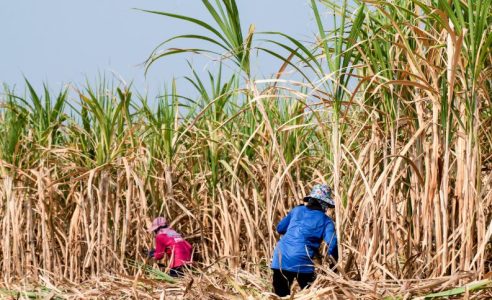
Karnataka’s sugarcane farming thrives in its fertile river basins, particularly those of the Cauvery, Krishna, and Tungabhadra rivers. The state is the third-largest producer of sugarcane in India, contributing 12% of the national output.
Sugarcane cultivation in Karnataka is characterized by its focus on sustainability. Farmers here often use organic fertilizers and integrated pest management techniques to improve soil health and yield.
The state government provides extensive support in the form of subsidies for equipment and irrigation facilities, ensuring that farmers remain competitive despite rising input costs.
Karnataka’s sugar mills are not just limited to sugar production; they are integral to ethanol and power generation as well. Bagasse, a by-product of sugarcane, is used to produce electricity, making the industry more sustainable.
A closer look at Karnataka’s sugarcane production highlights the following metrics:
- Annual sugarcane production: Over 60 million tonnes.
- Sugarcane price per quintal: ₹300–₹330.
- Total area under cultivation: Approximately 650,000 hectares.
- Average yield per hectare: 70 tonnes.
- Sugar mills: Around 75, including public and private enterprises.
- Bagasse-based electricity: Significant contributor to renewable energy.
- Ethanol output: Among the top producers in India.
Karnataka’s balanced approach to sustainability and industrial growth sets a benchmark for the sugarcane industry nationwide.
4. Tamil Nadu

Tamil Nadu is a prominent player in sugarcane production, thanks to its fertile lands and advanced agricultural practices. The state has a well-organized sugar industry and a strong emphasis on research and development.
Tamil Nadu’s climatic conditions, especially in regions like Thanjavur and Coimbatore, support optimal sugarcane growth.
Farmers in Tamil Nadu are known for adopting innovative farming techniques such as drip irrigation, which conserves water while ensuring healthy crop yields.
Additionally, the state government has introduced several subsidies and schemes to encourage farmers to adopt sustainable practices.
Sugarcane in Tamil Nadu is not just about quantity, it’s about quality, with high sucrose content ensuring premium-grade sugar.
The state’s sugar mills play a dual role in producing sugar and ethanol, making them crucial for both the food and energy sectors. Tamil Nadu’s commitment to sustainability and efficiency has solidified its position in the industry.
Here’s a snapshot of Tamil Nadu’s sugarcane production metrics:
- Annual sugarcane production: Over 40 million tonnes.
- Sugarcane price per quintal: ₹325–₹360.
- Total area under cultivation: Approximately 300,000 hectares.
- Average yield per hectare: 80–90 tonnes.
- Number of sugar mills: Over 40, including private and cooperative units.
- Ethanol production: A growing contributor to biofuels.
- Industry exports: Focus on raw and refined sugar.
Tamil Nadu continues to push the boundaries of efficiency and innovation, ensuring its sugarcane sector remains competitive on both national and global levels.
5. Bihar

Bihar, often overlooked in discussions about sugarcane production, has steadily emerged as a significant contributor. The fertile Gangetic plains provide an ideal environment for sugarcane farming, and the state’s farmers have a long tradition of cultivating this crop.
In recent years, Bihar has witnessed a surge in sugarcane farming due to government initiatives promoting agricultural development.
The state has also focused on building modern sugar mills to process the crop efficiently. This has not only boosted production but also created jobs for the local population.
Bihar’s sugarcane industry is unique because of its strong focus on jaggery production, a key rural enterprise. The state’s sugar mills have also started diversifying into ethanol production, aligning with national energy policies.
Key highlights of Bihar’s sugarcane production:
- Annual sugarcane production: Approximately 15 million tonnes.
- Sugarcane price per quintal: ₹300–₹340.
- Total area under cultivation: 200,000 hectares.
- Average yield per hectare: 75–80 tonnes.
- Sugar mills: Around 30, with a mix of public and private ownership.
- Ethanol capacity: Emerging as a key player in biofuels.
- Speciality: Major focus on jaggery and organic sugar production.
Bihar’s sugarcane sector is a testament to the potential of agricultural development in traditionally underserved regions.
6. Gujarat
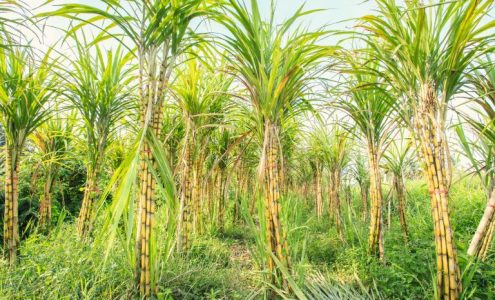
Gujarat, a state known for its entrepreneurial spirit, has made remarkable strides in sugarcane production. While not traditionally associated with sugarcane farming, Gujarat has leveraged its innovative mindset and technology-driven approach to boost productivity.
The state’s sugarcane farms are concentrated in regions like Surat and Bharuch, where farmers use advanced irrigation systems to overcome water scarcity. Gujarat’s government has also played a pivotal role in offering financial assistance and promoting modern agricultural practices.
In addition to sugar production, Gujarat is heavily focused on ethanol and bio-energy, aligning with the state’s industrial growth strategies. The sugarcane sector here is part of a larger ecosystem that supports allied industries and provides employment to thousands.
Insights into Gujarat’s sugarcane industry:
- Annual sugarcane production: Approximately 12 million tonnes.
- Sugarcane price per quintal: ₹300–₹330.
- Total area under cultivation: Around 150,000 hectares.
- Average yield per hectare: 75–85 tonnes.
- Sugar mills: Around 20, primarily private enterprises.
- Ethanol and bio-energy: Key areas of growth.
- Export focus: Increasing production of refined sugar for overseas markets.
Gujarat’s sugarcane industry exemplifies how innovation and government support can transform non-traditional agricultural regions.
7. Andhra Pradesh

Andhra Pradesh’s sugarcane production is concentrated in the Krishna and Godavari river basins, where fertile soil and abundant water resources provide ideal conditions. The state has a rich history of sugarcane farming and remains a key player in South India’s sugar industry.
Farmers in Andhra Pradesh benefit from government-backed training programs that promote efficient farming techniques.
From intercropping with pulses to using organic fertilizers, these methods ensure sustainable growth while boosting yields.
The state is also a pioneer in integrating sugarcane by-products into industrial processes, such as ethanol and bagasse-based power generation.
Key statistics of Andhra Pradesh’s sugarcane industry:
- Annual sugarcane production: Around 10 million tonnes.
- Sugarcane price per quintal: ₹310–₹340.
- Total area under cultivation: 140,000 hectares.
- Average yield per hectare: 70–75 tonnes.
- Number of sugar mills: Over 25, including cooperative ventures.
- Bio-energy focus: Significant production from bagasse.
- Export potential: Increasing focus on organic sugar.
Andhra Pradesh’s blend of tradition and innovation makes it a vital contributor to India’s sugarcane sector.
8. Punjab
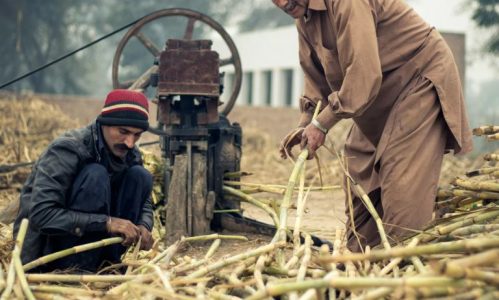
Punjab, the breadbasket of India, is also a notable contributor to sugarcane production. Despite its primary focus on wheat and rice, the state has allocated significant resources to sugarcane farming. The fertile soil and advanced irrigation systems ensure consistent yields.
Punjab’s sugarcane farms are highly mechanized, with farmers using modern equipment for sowing and harvesting.
The state also emphasizes the use of high-yield varieties to maximize output. Sugar mills in Punjab are increasingly adopting renewable energy solutions, making the industry more sustainable.
Highlights of Punjab’s sugarcane industry:
- Annual sugarcane production: Around 9 million tonnes.
- Sugarcane price per quintal: ₹310–₹350.
- Total area under cultivation: 130,000 hectares.
- Average yield per hectare: 70–80 tonnes.
- Number of sugar mills: Around 20, focusing on energy-efficient processes.
- Renewable energy: Bagasse-based power production.
- Government support: Subsidies for mechanization and irrigation.
Punjab’s sugarcane sector demonstrates how traditional farming regions can diversify effectively.
9. Haryana
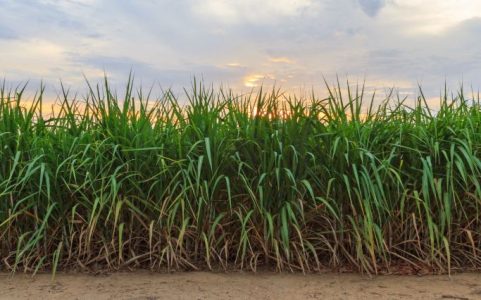
Haryana is a growing player in sugarcane production, with its focus on high-yield varieties and efficient farming techniques.
The state’s sugarcane industry is concentrated in areas like Karnal and Panipat, which benefit from rich soils and advanced irrigation networks.
Haryana’s government has actively supported sugarcane farmers through subsidies and training programs, ensuring they remain competitive despite rising costs.
The state’s sugar mills are also major contributors to ethanol production, aligning with national energy goals.
Key facts about Haryana’s sugarcane production:
- Annual sugarcane production: Around 8 million tonnes.
- Sugarcane price per quintal: ₹310–₹340.
- Total area under cultivation: 110,000 hectares.
- Average yield per hectare: 70–75 tonnes.
- Number of sugar mills: Approximately 15.
- Ethanol contribution: Emerging as a key producer.
- Mechanized farming: High adoption rates.
Haryana’s focus on modernization ensures steady growth in its sugarcane sector.
10. Uttarakhand
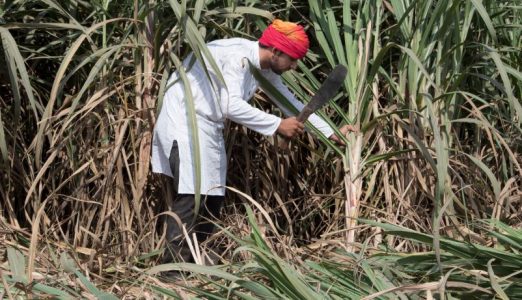
Uttarakhand’s sugarcane production is centred in the Terai region, where fertile soils and abundant water resources provide an ideal environment for cultivation.
The state’s small but efficient sugar industry plays a vital role in the local economy.
Sugarcane farming in Uttarakhand benefits from government-backed initiatives that promote sustainable practices. The state is also investing in research to develop high-yield and pest-resistant varieties.
Key statistics of Uttarakhand’s sugarcane industry:
- Annual sugarcane production: Around 7 million tonnes.
- Sugarcane price per quintal: ₹300–₹330.
- Total area under cultivation: 90,000 hectares.
- Average yield per hectare: 75 tonnes.
- Number of sugar mills: Around 10, mostly state-supported.
- Renewable energy focus: Bagasse-based power generation.
- Speciality: High sucrose content for premium sugar.
Uttarakhand’s sugarcane industry exemplifies sustainable growth in a resource-constrained environment.
Conclusion
India’s sugarcane production is a testament to its rich agricultural heritage and modern advancements. States like Uttar Pradesh and Maharashtra dominate due to their ideal climates, fertile soils, and efficient farming practices.
Each state brings unique strengths to the sugarcane industry, contributing to sugar, ethanol, and jaggery production. While challenges like water scarcity persist, government initiatives and technological innovations ensure steady growth.
Sugarcane not only bolsters India’s economy but also supports rural livelihoods and energy security. With sustained efforts, India’s sugarcane sector is poised to remain a global leader, benefiting millions of farmers and contributing significantly to industrial growth and export markets.
FAQs About Sugarcane Production in India
Which crop is known as the backbone of India’s sugar industry?
Sugarcane is the backbone of India’s sugar industry, supporting both rural livelihoods and allied industries.
What is the largest sugarcane producing state in India?
Uttar Pradesh leads in sugarcane production, contributing over 40% of the national output.
How does sugarcane contribute to renewable energy?
Bagasse, a sugarcane by-product, is used to generate bio-energy and electricity.
What are the major by-products of sugarcane?
The main by-products include ethanol, molasses, and bagasse, each supporting diverse industries.
Why is sugarcane called a cash crop?
Sugarcane ensures steady income for farmers due to high demand and assured procurement by mills.
How has technology improved sugarcane farming?
Modern methods like drip irrigation, mechanization, and hybrid seeds have boosted yields and resource efficiency.
What role does the government play in sugarcane farming?
Government schemes provide subsidies, price support, and infrastructure development for sugarcane farmers.

